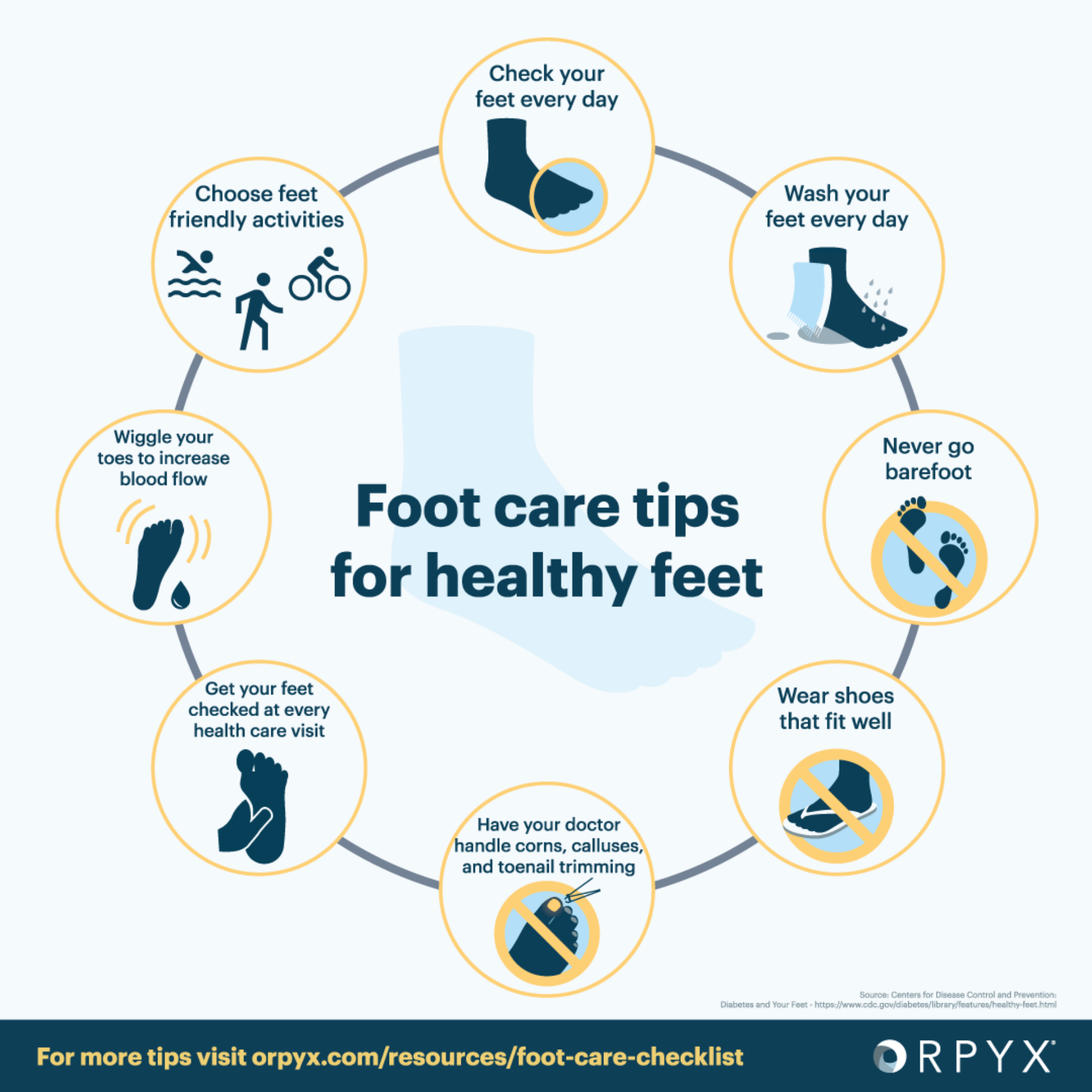
Diabetes can lead to various complications, one of the most serious being foot problems. High blood sugar levels can cause nerve damage and reduce blood flow, making it challenging for wounds to heal. Proper foot care is crucial for people with diabetes to prevent complications such as infections, ulcers, and even amputations. In this blog, we’ll discuss essential foot care practices for diabetics and tips to maintain healthy feet.
Understanding the Importance of Foot Care in Diabetes
Diabetes can affect foot health in two primary ways:
- Neuropathy: High blood sugar can lead to nerve damage, resulting in a loss of feeling in the feet. This makes it difficult to notice injuries or sores.
- Poor Circulation: Diabetes can restrict blood flow to the feet, impairing healing and increasing the risk of infections.
By following proper foot care practices, you can significantly reduce the risk of complications and maintain healthy feet.
Essential Foot Care Tips for Diabetics
1. Daily Foot Inspections
- What to Do: Examine your feet daily for cuts, blisters, redness, swelling, or any abnormalities. Use a mirror if necessary to check the bottoms of your feet.
- Why It Matters: Early detection of foot issues can prevent serious complications.
2. Keep Feet Clean and Dry
- What to Do: Wash your feet daily with mild soap and warm water. Ensure you dry them thoroughly, especially between the toes.
- Why It Matters: Keeping your feet clean helps prevent infections. Moisture between the toes can lead to fungal infections.
3. Moisturize, but Avoid Between Toes
- What to Do: Apply a moisturizer to the tops and soles of your feet to prevent dryness. Avoid putting lotion between your toes to prevent excess moisture.
- Why It Matters: Keeping the skin hydrated reduces the risk of cracks and infections.
4. Choose the Right Footwear
- What to Do: Wear shoes that fit well and provide adequate support. Avoid tight shoes or those that rub against your skin. Consider custom orthotics if necessary.
- Why It Matters: Proper footwear helps prevent blisters, calluses, and other foot injuries.
5. Trim Toenails Carefully
- What to Do: Cut your toenails straight across and file the edges to avoid ingrown toenails. If you have difficulty, seek help from a podiatrist.
- Why It Matters: Improperly trimmed toenails can lead to injuries or infections.
6. Maintain Good Blood Sugar Control
- What to Do: Work with your healthcare team to manage your blood sugar levels effectively through diet, exercise, and medication.
- Why It Matters: Keeping blood sugar levels stable can help prevent nerve damage and circulation problems.
7. Avoid Walking Barefoot
- What to Do: Always wear shoes, even indoors. This protects your feet from injury.
- Why It Matters: Diabetics may not feel small injuries, increasing the risk of infections.
Additional Foot Care Practices
- Get Regular Foot Exams: Schedule regular visits with a healthcare provider or podiatrist to monitor foot health. They can identify issues early and provide treatment if necessary.
- Stay Active: Engage in regular physical activity to improve circulation in your feet. However, be cautious about high-impact activities that may cause injury.
- Manage Other Health Conditions: Conditions such as high blood pressure and high cholesterol can impact foot health. Work with your healthcare provider to manage these effectively.
- Recognize Signs of Infection: Be aware of symptoms such as increased redness, swelling, warmth, or discharge from a sore. Seek medical attention promptly if you notice any signs of infection.
Conclusion
Foot care is an essential aspect of diabetes management. By implementing these tips and being proactive about your foot health, you can significantly reduce the risk of complications and enjoy a healthier life. Remember, if you have any concerns about your feet or notice any changes, consult your healthcare provider immediately.

